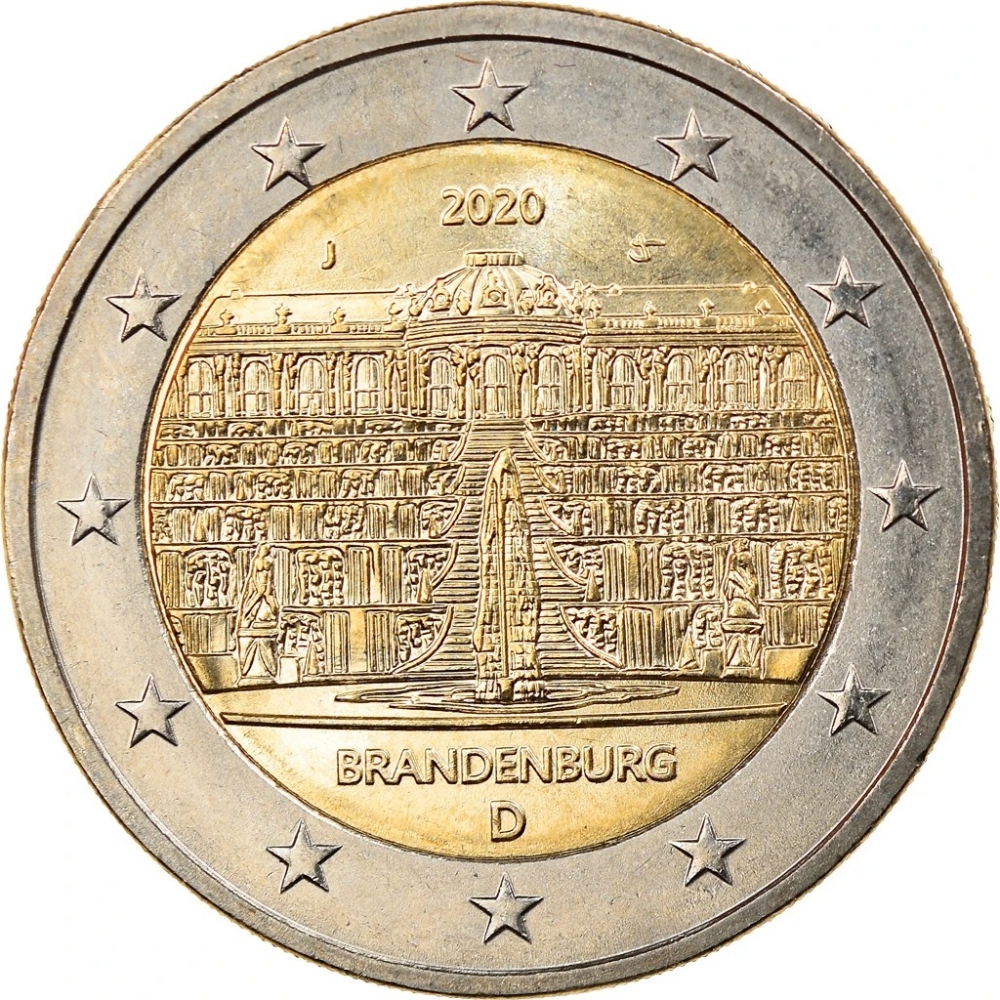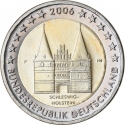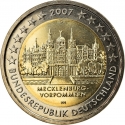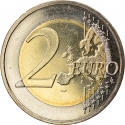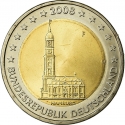You are about to finish your registration. Please check your mailbox (including spam folder). There should be a letter with a confirmation link. Check setting to make sure that your e-mail address is correct.
Send letter againDescription
The Federal Republic of Germany has 16 states (German: Bundesländer). Since 2006, Germany issues every year a Bundesländer coin for a specific state that has that’s year’s presidency of the Bundesrat.
Brandenburg is located in the northeast of Germany. Potsdam is the state capital and largest city, while other major cities include Brandenburg an der Havel, Cottbus, and Frankfurt (Oder). Brandenburg surrounds the national capital and city-state of Berlin, which together form the Berlin/Brandenburg Metropolitan Region, the third-largest metropolitan area in Germany. Brandenburg borders the states of Mecklenburg-Vorpommern, Lower Saxony, Saxony-Anhalt, and Saxony, and the country of Poland.
Brandenburg originated in the Northern March in the 900s AD from areas conquered from the Wends, and later became the Margraviate of Brandenburg, a major principality of the Holy Roman Empire, with Albert the Bear as prince-elector. In the 15th century Brandenburg came under the rule of the House of Hohenzollern, who later also became the rulers of the Duchy of Prussia, who established Brandenburg-Prussia to become the core of the later Kingdom of Prussia. Brandenburg became the Province of Brandenburg in 1815, a province within the kingdom and later within the Free State of Prussia. Brandenburg was established as a state in 1945 after World War II by the Soviet army administration in Allied-occupied Germany, and became part of the German Democratic Republic in 1947. Brandenburg was dissolved in 1952 during administrative reforms and its territory divided into the districts of Potsdam, Cottbus, Frankfurt, Neubrandenburg, and Schwerin, but was re-established in 1990 following German reunification, and became one of the Federal Republic of Germany's new states.
Obverse

|
Depicts the south facing garden façade of Sanssouci Palace of Potsdam. Date above and inscription below the building. National identifying mark (D for Deutschland / Germany) is below the inscription. Mintmark (A for Berlin, D for Munich, F for Stuttgart, G for Karlsruhe, J for Hamburg) on the upper left and engraver's privy mark on the upper right. 2020 |
|---|---|
Reverse

|
A geographical map of Western Europe spans the outer ring and inner core on the right side of the coin. The inscription 2 EURO is superimposed over the map of Europe, with the numeral “2” located in an open field representing the eastern Atlantic Ocean. 2 EURO |
| Edge |
UNITY AND JUSTICE AND FREEDOM in German, Germany's national motto and the beginning of Germany's national anthem, followed by the Federal Eagle EINIGKEIT UND RECHT UND FREIHEIT |
Swap now (2 offers)
Characteristics
| Type | Commemorative Issue (Circulating) |
| Material | Bi-Metallic |
| Ring | Cupronickel |
| Center | Nickel Brass |
| Weight | 8.5 g |
| Diameter | 25.75 mm |
| Thickness | 2.2 mm |
| Shape |
|
| Alignment | Medal |
| Mints |
Bavarian Central Mint (D) Berlin State Mint (A) Hamburg Mint (J) Karlsruhe State Mint (G) Stuttgart State Mint (F)
|
